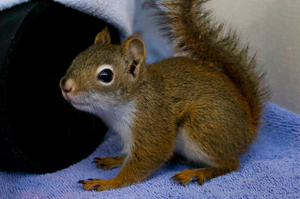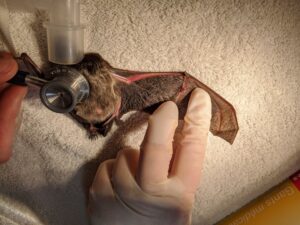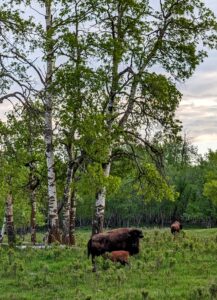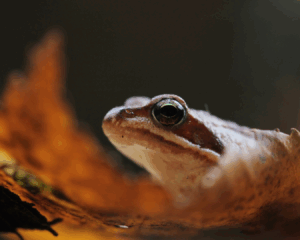Running across electrical wires, up trees and across roads, you’re probably pretty familiar with Sciuridae. Wait a second, what is that? Let me tell you!
Sciuridae is the animal family that includes tree squirrels, ground squirrels, flying squirrels, marmots, prairie dogs, chipmunks and more.
Around Alberta, you probably see one of these bushy-tailed species (the red squirrel) on a regular basis.
These furry friends are most recognisable by their tails, which make up almost half their length! Squirrels use their tails for balance as they jump from tree to tree or rooftop to rooftop. They are agile, aren’t they? It seems like squirrels are everywhere in Alberta!
Their natural habitat is in Alberta’s boreal, coniferous or mixed forests. But squirrels seem comfortable living just about anywhere.
A squirrel’s diet consists mainly of seeds and nuts, and they have a special place in their hearts for pinecones and spruce tree droppings!
Did you know that squirrels might also eat things like bird’s eggs, flowers, fruits, mushrooms and more? They are savvy little rodents who get by on what they can.
Unlike other types of squirrels, red squirrels don’t bother with hibernating through the winter. They aren’t scared of a little cold weather! Red squirrels stay active throughout the winter by collecting nuts and climbing trees just like they do the rest of the year!
Red squirrels start breeding in March or April, giving birth to four or five pups a couple of months later. Babies are usually born in the cavities of trees or in nests built into branches.
Tip: Trying to figure out if squirrels are around? Look for piles of cones or discarded shells from previous nut meals.
Another common Sciuridae is the Red-tailed Chipmunk. These small rodents are only about 21 to 25 cm long and just like squirrels, their tails make up roughly half of their total body length.
Chipmunks are reddish in colour and have bright orange or rust colours under their tails. They have signature stripes in black or brown and light tawny or creamy white.
Alberta chipmunks tend to dwell in conifer forests in the subalpine regions of Waterton Lakes National Park and the West Castle Valley.
Chipmunks enjoy munching on seeds from saskatoon, wild rose and snowbrush bushes. They eat leaves, flowers and fruits from these plants.
Unlike their squirrel cousins, chipmunks tend to spend winter alone in their burrows. But don’t feel bad for the little critters; come spring, female chipmunks use their burrows as nurseries for litters of two to four young.
Keep an eye out for these little rodents. Alberta is full of diverse, beautiful wildlife, and you don’t even need to look further than the electrical poles outside your house to find them!
By Nina Grossman, AIWC Volunteer
“Each species is a masterpiece, a creation assembled with extreme care and genius.” Edward O. Wilson
Sources:
https://aep.alberta.ca/fish-wildlife/wild-species/mammals/rabbits-rodents/red-squirrel.aspx
https://aep.alberta.ca/fish-wildlife/wild-species/mammals/rabbits-rodents/red-tailed-chipmunk.aspx
https://animaldiversity.org/accounts/Sciuridae/






